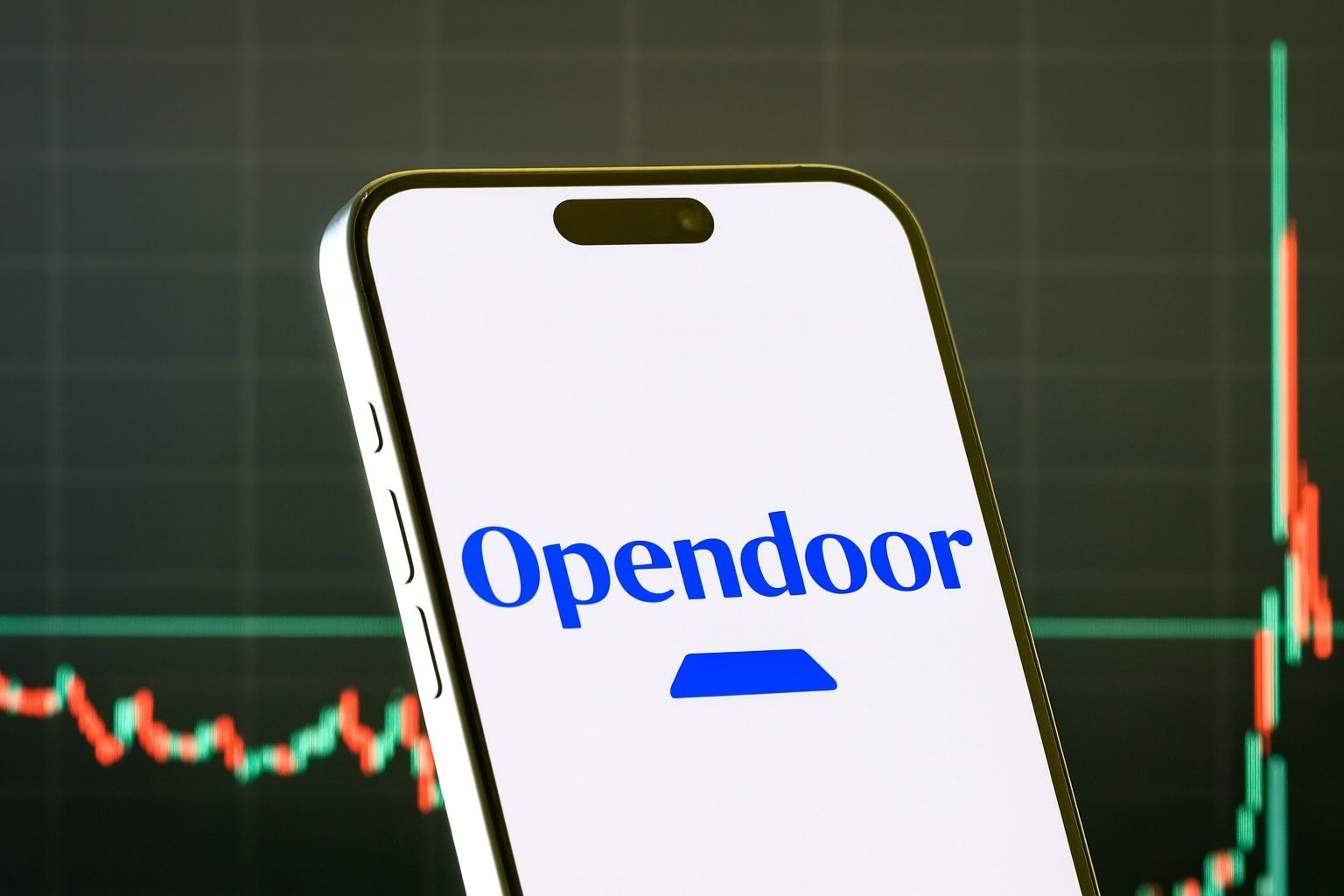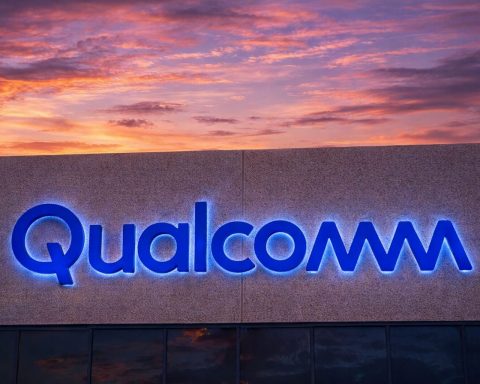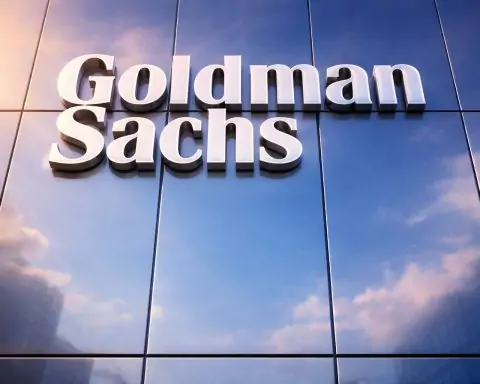- 1600% Rally: Opendoor Technologies (NASDAQ: OPEN) rocketed from under $1 in June to over $10 by mid-September 2025 (~+1600%), briefly becoming a meme-stock sensation [1]. It has since cooled to the mid-$7 range as of late October [2], still up 400%+ year-to-date.
- New CEO & Cost Cuts: Former Shopify COO Kaz Nejatian took over as CEO in September, joined by co-founder Keith Rabois as Chairman. They’re slashing costs (Rabois even suggested cutting ~85% of Opendoor’s 1,400 staff) and pursuing an “AI-first” turnaround [3].
- Crypto Plans Boost Stock: On Oct. 6, Nejatian confirmed plans for Opendoor to accept Bitcoin/crypto for home purchases, sending OPEN shares +14% in one day [4]. Investors cheered the bold fintech move as Opendoor eyes tech-savvy homebuyers.
- Financial Ups & Downs: Opendoor turned EBITDA-positive in Q2 2025 (its first adjusted profit since 2022) on $1.6 B revenue [5], but management warns Q3 will dip back to losses (guiding only ~$0.8–0.87 B revenue amid high rates) [6].
- Meme Hype vs. Skeptics: An army of retail traders (“$OPEN Army”) fueled the run-up, but Wall Street remains wary – the average analyst 12-month target is just ~$1–2 [7]. One hedge fund manager blasted OPEN as “total garbage” with a broken model [8], even as some bulls talk of huge upside.
- Dominating iBuying: After Zillow and Redfin quit the iBuyer business (shutting programs in 2021–22) [9], Opendoor stands as the last major home-flipper at scale (alongside smaller rival Offerpad). It’s trying to leverage this second chance in a tough housing market.
- Housing Market Turns? There are glimmers of a real estate rebound: mortgage rates have eased and new home sales spiked +20.5% in August [10]. Any sustained housing uptick could bolster Opendoor’s margins – a crucial factor for the stock’s next chapter.
Latest Developments (Mid/Late October 2025)
In recent days, Opendoor has made headlines with bold strategic moves and wild trading swings. October 2025 has been eventful: on Oct 6, CEO Kaz Nejatian set social media ablaze by hinting Opendoor will let people buy homes with cryptocurrency. When asked on X (Twitter) about using Bitcoin for a house, he replied, “We will. Just need to prioritize it.” The mere confirmation of crypto plans ignited a buying frenzy – OPEN jumped ~14% to $9.28 that day [11]. This crypto pivot marks a new fintech twist in Opendoor’s strategy, aiming to attract crypto-rich buyers and modernize home transactions. It also reinforced management’s tech-driven vision, coming on the heels of Nejatian’s pledge to make Opendoor an “AI-first, agent-led” real estate platform [12].
Around the same time, Opendoor rolled out novel buyer incentives to spur sales. In early October, the company announced a 100-day home warranty on major systems and a “7-Day Home Test Drive” program letting buyers move in and back out if not satisfied [13]. Piloted in Dallas, these perks (set to expand nationally) aim to boost customer confidence and differentiate Opendoor in a slow housing market. It’s an innovative approach to overcome buyer hesitancy – essentially offering returns on homes – and reflects Opendoor’s willingness to shake up traditional real estate norms.
Meanwhile, the stock’s gravity-defying rally began to consolidate. After peaking above $10 in mid-September, OPEN spent mid-October trading in the $7–8 range [14]. As of Oct 20, 2025, shares closed around $7.50, up modestly from the prior week and still hundreds of percent higher than January. The volatility remains extreme: recall that on Sept 11, Opendoor’s announcement of a new CEO and returning founders sent the stock surging 79% in a single day, its biggest one-day jump ever [15]. That rally – from penny-stock levels to nearly $10 – rescued Opendoor from a potential Nasdaq delisting and captivated the market’s attention. In late September, however, momentum traders rotated to the next hot ticker, and OPEN plunged ~20% over two sessions [16]. This whiplash trading underscores that Opendoor has become a meme stock of 2025, prone to sudden spikes and crashes based on the buzz du jour.
Stock Performance: From Penny Stock to Meme Superstar
Opendoor’s 2025 stock chart tells a tale of two extremes. The company started the year languishing below $1 per share, but by the fall it had exploded into one of the year’s top gainers. From late June’s all-time low (~$0.50) to mid-September’s high (~$10.52), OPEN rocketed roughly +1,600% [17] [18]. This astonishing run – reminiscent of GameStop or AMC in their heyday – briefly turned Opendoor into a social media phenomenon. In fact, Yahoo Finance noted OPEN’s +369% year-to-date return by mid-October, trouncing the S&P 500’s ~14% gain [19]. The rally was so rapid that Opendoor went from a near-penny stock to a mid-cap $6 billion company in a matter of months [20]. Management even shelved contingency plans for a reverse stock split, no longer needed once shares rebounded above Nasdaq’s $1 minimum [21].
However, high-flying stocks rarely move in a straight line. After hitting ~$10+, Opendoor pulled back about 15–25%, settling in the high-single digits by early October [22]. By Oct 20, OPEN trades around the mid-$7s – well off its peak but still up ~400% in 2025 [23]. Daily trading volumes remain enormous (often hundreds of millions of shares [24]), indicating heavy retail speculation and possibly algorithmic trading at play. Short interest is elevated (roughly 26% of the float sold short), which sets the stage for periodic short squeezes and outsized moves [25]. Indeed, wild swings have become normal: the stock swung almost 80% up on the CEO news, then 20% down when meme traders abruptly rotated into another housing stock in late September [26] [27].
For context, Opendoor’s 52-week range now spans from about $0.51 to $10.87 [28] – a testament to the roller-coaster year it’s had. Even after the recent pullback, the stock’s momentum is notable. Technically, OPEN’s surge propelled it above key moving averages and resistance levels. As of late September, shares were trading above their 20, 50, 100, and 200-day averages, reflecting strong bullish trend strength [29]. Momentum indicators cooled somewhat with the October consolidation – the 14-day RSI dipped from overbought levels to around neutral (~60) [30] – but overall the uptrend from summer remains intact. Traders are now watching whether OPEN can hold support in the mid-$7s (its recent base) and possibly re-test higher resistance. Chart analysts point to a pivot around $12 as a major hurdle – a close above ~$12 would signal another leg higher (with $15+ as next resistance), whereas failure to break out could keep OPEN range-bound or worse [31]. On the downside, initial support sits around $4 (a prior pivot and the 100-day average), with any break below that potentially accelerating declines [32]. In short, Opendoor’s chart shows signs of strength but also leftover scars of volatility – a classic profile for a recent meme stock darling.
New Leadership: Shopify Veteran Takes the Helm
Opendoor’s fundamental narrative changed dramatically with an executive shake-up in late summer 2025. Under pressure from investors, CEO Carrie Wheeler resigned in August. In her place, Opendoor made a bold hire: Kazimier “Kaz” Nejatian, the former Vice President of product and COO at Shopify, was named CEO (and joined the board) effective September [33]. Simultaneously, Opendoor’s co-founders Keith Rabois and Eric Wu – who had both stepped away from daily roles – returned to the board, with Rabois installed as Chairman [34]. The market greeted this news with euphoria: the day it was announced, OPEN stock soared ~80% as investors bet on a turnaround under new leadership [35].
Why the excitement? Nejatian brings Silicon Valley pedigree and a reputation for scaling tech products. At Shopify he championed AI initiatives, which dovetails with Opendoor’s vision of using data and artificial intelligence to optimize home sales. Rabois, for his part, is a prominent tech investor (a “PayPal mafia” member) who was Opendoor’s early architect. He wasted no time voicing blunt critiques and plans. Rabois publicly lamented that Opendoor had “gotten bloated” with ~1,400 employees, declaring “I don’t know what most of them do” [36]. He suggested the company could operate with merely 200 staff – implying an 85% reduction – to regain startup-like efficiency [37]. Such talk of massive layoffs shocked observers, but also signaled an aggressive commitment to cutting costs.
The new regime quickly backed words with money: Rabois’s venture firm (Khosla Ventures) and co-founder Eric Wu injected $40 million into Opendoor via a private investment in September [38]. This cash infusion, while relatively small, was a vote of confidence and provided a bit more liquidity runway. Internally, Nejatian and Rabois are laser-focused on a leaner, tech-driven strategy. They’ve emphasized an “AI-first” approach, aiming to harness Opendoor’s troves of real estate data to improve pricing algorithms and operations [39] [40]. “Few life events are as important as buying or selling a home. With AI, we have the tools to make that experience radically simpler, faster and more certain,” Nejatian said, outlining his vision [41]. The company has already begun rolling out AI-powered features and partnering with local agents (through a program called “Opendoor Exclusives / Key Connections”) to blend technology with human expertise [42] [43]. Early data from these efforts is promising – Opendoor said the new agent-partner model doubled the number of sellers accepting its offers and boosted listing conversions fivefold in pilot markets [44].
Another pillar of the turnaround is old-fashioned cost discipline. Beyond potential headcount cuts, Opendoor trimmed expenses and even authorized a $200 million share buyback for Q3 2025 [45] – a somewhat surprising move for a still-unprofitable firm, but intended to signal management’s confidence in the stock’s value. The company also quietly settled a lingering legal issue: in June, Opendoor agreed to pay $39 million to resolve a 2022 investor lawsuit alleging it misled shareholders about its pricing algorithms [46]. While denying wrongdoing, the company put that distraction behind it for a relatively small sum (for context, Opendoor’s market cap swings by more than $39M with every few cents change in the share price).
Nejatian’s arrival and the founders’ return essentially mark Opendoor’s “Chapter 2.” The team is candid that mistakes were made in 2022’s housing bust, and they’re determined not to repeat them. They are prioritizing profitability over growth, even if it means a smaller operation in the short term [47] [48]. Notably, Opendoor already implemented layoffs (cutting ~40 roles in June 2025) and slashed its home inventory to reduce risk [49] [50]. The leaner inventory (about 4,538 homes worth ~$1.5B as of Q2) means Opendoor can be more selective and avoid fire-sales like those that caused huge losses in 2022 [51] [52]. With over $1 billion in cash on hand after Q2 [53], plus the new $40M injection and potential future financing, the company believes it has sufficient runway to execute its turnaround. The big question is whether Nejatian’s tech-centric tweaks and Rabois’s cost cuts can transform a historically money-losing business into a sustainably profitable one.
Fundamental Checkup: Earnings, Cash Flow & Housing Conditions
From a fundamental perspective, Opendoor’s latest financial results show both progress and persistent challenges. In Q2 2025, the company delivered $1.57 billion in revenue [54] (actually up slightly year-over-year, after a string of declines) and a gross profit of $128 million (8.2% gross margin) [55]. Most notably, Opendoor achieved a positive Adjusted EBITDA of +$23 million [56]. This was a milestone – the first quarter in the black (on an adjusted EBITDA basis) since 2022’s housing market collapse [57] [58]. It indicates the unit economics of each home sale have improved, thanks to higher margins and cost cutting. The net loss was still about $29 million in Q2 [59], but that’s a far cry from the hundreds of millions lost per quarter in 2022 [60]. In short, Opendoor’s core business of buying and reselling homes appears to be stabilizing at a lower, leaner level: it sold 4,299 homes in Q2 (actually a 5% YoY increase) while drastically reducing the number of homes it holds at a time [61].
However, the road ahead is bumpy. Opendoor’s executives cautioned that Q3 2025 would regress somewhat due to macro headwinds. They guided for quarterly revenue around $800–875 million – roughly half of Q2’s sales – and a return to an Adjusted EBITDA loss (estimated between –$28M and –$21M) [62]. In other words, the housing slowdown is expected to hit Opendoor’s summer results hard. High mortgage rates (which spiked above 7% earlier in 2025) have kept many buyers and sellers on the sidelines, shrinking the volume of transactions. Fewer home sales mean fewer houses for Opendoor to flip and thinner spreads on each sale. Management’s subdued outlook for Q3 implies they foresee a tough environment persisting into late 2025 [63]. Indeed, Opendoor explicitly warned that it would dip back into negative EBITDA in the second half as the post-pandemic real estate malaise continues [64].
Looking at the bigger picture, Opendoor’s revenues are a fraction of what they once were. After aggressive growth from 2017–2021, the company’s top line peaked at $15.6 billion in 2022, then plummeted to about $5.1 billion in 2024 amid a retrenchment and housing cooldown [65]. For 2025, Wall Street consensus expects ~$5–6 billion revenue – essentially flat with 2024, reflecting a year of regrouping rather than growth [66] [67]. Opendoor’s own goal is to reach breakeven profitability by 2026, which Rabois has hinted is possible if all goes right [68]. To get there, the company must carefully manage its inventory (not overpay for homes), continue trimming operating expenses, and hope for at least a mild recovery in housing demand. Insider behavior provides a note of confidence: co-founder Eric Wu in late September bought ~$2 million worth of OPEN stock on the open market (around $6.65/share), upping his stake to ~1.95 million shares [69]. Around the same time, quantitative trading firm Jane Street disclosed a 5.9% stake (44+ million shares) in Opendoor [70] – a significant bet by a usually stealthy market maker. Such insider and institutional buying suggests some savvy players see value in Opendoor’s beaten-down stock, perhaps anticipating that the worst of the housing cycle is over.
Crucially, housing market trends will heavily influence Opendoor’s fundamentals. The company’s fortunes are tightly linked to U.S. real estate conditions – and there are mixed signals on that front. On one hand, 2025 has seen high mortgage rates and affordability issues continue to suppress home sales. Existing-home sales recently hit a ~4 million annual pace, a 30-year low [71] [72]. Opendoor responded by scaling back home purchases to avoid holding too much unsold inventory. On the other hand, there are early signs of a thaw. The Federal Reserve enacted its first interest rate cut in September 2025, easing the benchmark rate to 4.00–4.25% [73]. Consequently, 30-year mortgage rates dipped to ~6.4% (the lowest since late 2024) [74]. In August 2025, U.S. new home sales shot up +20.5% month-on-month to the highest level in over a year [75]. The median new house price also ticked up to ~$413,500 [76]. This surprisingly strong housing report in late September actually sent Opendoor’s stock up 10%+ in one day [77] [78], as investors speculated that improving buyer activity and firmer prices could boost Opendoor’s resale margins. If mortgage rates continue to ease into 2026 (as many expect, given cooling inflation), housing demand may slowly revive – which would be a tailwind for Opendoor. Even a moderate rebound in home sales and prices could dramatically improve Opendoor’s turnover and profitability, given its now-lean cost base. Thus, while fundamentals are currently weak, the macro outlook offers a glimmer of hope that Opendoor might be turning a corner at just the right time.
Analysts & Media: Bulls’ Dreams vs. Bears’ Warnings
Despite the dramatic run-up in OPEN shares, Wall Street analysts remain largely unconvinced. The stock’s consensus rating is stuck between Hold and Sell, and price targets are far below the current market price. MarketBeat tracking shows the average 12-month target is about $1.26 – implying a stunning ~85% drop from where the stock trades now [79] [80]. In fact, across various brokerages, targets cluster in the $0.70 to $2.00 range [81]. For example, Citigroup reiterated a $0.70 target in August (sell-rated, citing weak resale activity) [82]. Keefe, Bruyette & Woods assigned a $1.00 target (neutral, acknowledging cost cuts but unsure on growth) [83]. UBS raised its target slightly to $1.60 (still below $2) on expectations that profitability will be delayed until at least 2026 [84]. Even the most optimistic major analysts top out around $2. In short, professional forecasters see little fundamental justification for the stock’s meme-fueled valuation. As one noted, Opendoor’s thin margins and high interest costs mean its current ~$7–8 price “bakes in a heroic recovery” that would require near-flawless execution (or a housing miracle) to be proven right [85]. Goldman Sachs, Deutsche Bank, and others have all maintained cautious stances through the rally, often reiterating that the iBuyer model’s risks (home price swings, inventory carrying costs) still outweigh the recent hype.
Media and independent analysts have also chimed in with skepticism. Motley Fool commentator Matt Frankel warned on Oct. 9 that Opendoor’s meteoric stock gains were “starting to remind me of the 2021 meme stock craze, and not in a good way.” [86] He cautioned that while momentum is strong, the business hasn’t fundamentally changed overnight – drawing parallels to past bubbles that ended poorly. Meanwhile, a chorus of short-sellers and hedge fund veterans has been openly bearish. Notably, former Fidelity Magellan fund manager George Noble took to X in September to call Opendoor “TOTAL GARBAGE”, arguing “the business model does not work and has atrocious unit economics” [87] [88]. Noble noted Opendoor has lost money every year of its existence and scoffed that cost-cutting alone “will not move the needle” on such a flawed model [89] [90]. He urged investors not to “pretend there is a fundamental case” for the stock at these prices [91]. Around the same time, controversial investor Martin Shkreli announced he was shorting OPEN at ~$9.36, calling it an “obvious short” and planning deep-dive research to expose weaknesses [92]. And famed short-seller Citron Research attacked Opendoor as “nothing more than a stock promo and a science project in how to burn money,” asserting that its strategy has glaring holes [93]. Such harsh critiques underscore a growing backlash from fundamental investors who see Opendoor’s rally as detached from reality.
On the bullish side of the ledger, a few voices argue that the pessimism is overdone. The very rally that alarmed skeptics was sparked by Eric Jackson of EMJ Capital, a small Canadian hedge fund manager who in July touted Opendoor as the next big turnaround. Jackson publicly predicted OPEN could hit $82 per share long-term – a nearly 10x gain – if the company executes well and scales like Carvana did [94]. His exuberant call (and active Twitter promotion) helped ignite the early meme frenzy, as Reuters reported that Opendoor’s stock surged 400%+ in July once retail traders latched onto the story [95]. Jackson insists Opendoor is a “real business” with a huge opportunity, not just a meme flash-in-the-pan [96]. Similarly, JPMorgan surprised some observers by reiterating an “Overweight” (Buy) on Opendoor after Kaz Nejatian’s hiring in September [97]. JPMorgan’s analysts, while in the minority, argued that new tech-savvy leadership could “sharpen product focus and execution,” potentially reigniting growth [98]. They reportedly set a higher price target (though specifics weren’t publicly disclosed) and saw Opendoor’s dominant position in iBuying as an asset if managed properly [99]. Bulls also point out that Opendoor has effectively no direct competitor of equal scale now (more on that below), and if it can survive the current slump, it could thrive when housing volumes normalize. Some optimists even draw comparisons to Amazon’s early years, noting that many doubted Amazon’s money-losing e-commerce model until it eventually achieved scale and proved the naysayers wrong. In the words of one growth investor, “with a new CEO, bold expansion plans, and a dominant position, [Opendoor] could disrupt real estate at scale” [100] – but even he conceded that the company “must still prove its path to profit.” [101]
The stark divide between meme-stock enthusiasts and traditional analysts makes Opendoor one of the market’s most intriguing battlegrounds. Retail forums on Reddit and X are filled with grandiose predictions and memes hailing Opendoor as the future of real estate, often dismissing negative analysis as “FUD” (fear, uncertainty, doubt) [102] [103]. On the other side, value-oriented investors warn that many have been burned before by chasing “story stocks” with poor fundamentals. Even CNBC’s Jim Cramer weighed in during a Lightning Round, urging a caller to “ring the register” on Opendoor gains and not get caught up in a speculative frenzy [104]. As it stands, OPEN has become a high-risk, high-reward symbol – beloved by momentum traders betting on a big comeback, and shunned by those who see an overvalued housing flipper one hiccup away from trouble.
Competitive Landscape: Opendoor vs. Zillow, Redfin & Co.
Opendoor operates in the real estate tech sector, straddling the line between fintech and proptech. Its signature iBuying model (algorithmic home flipping) was once a crowded race, but most peers have fallen by the wayside. Zillow famously launched “Zillow Offers” in the late 2010s to buy homes directly, only to shutter the program in 2021 after heavy losses. Redfin tried a similar approach with “RedfinNow,” but exited iBuying in 2022 for the same reason [105]. These retreats left Opendoor and Offerpad as the two main iBuyers still standing in 2025. Offerpad, a smaller rival founded in 2015, remains operational (in about 9 states) and at one point even achieved profitability in select markets [106]. However, Offerpad’s scale is modest compared to Opendoor, and it has struggled as a public company (its market cap and volumes are a fraction of Opendoor’s).
With the “big fish” like Zillow and Redfin out, Opendoor in theory has an opportunity to dominate the instant home-buying niche. It no longer faces competition from deep-pocketed Big Tech or large portals in this space. As TS2.tech noted, this lack of major competitors gives Opendoor a “unique second chance” to own the market it pioneered [107]. But it’s a cautious victory – one earned because the economics scared others away. The failure of Zillow Offers (which incurred write-downs on homes) and RedfinNow is a stark reminder of how risky and capital-intensive the iBuyer model can be. In essence, Opendoor won the iBuying war by outliving its rivals, but now it must prove the model can work long-term with no one left to blame if it can’t.
Instead of battling traditional real estate brokers head-on, Opendoor has shifted to partnering with parts of the industry. Notably, it struck multi-year partnerships with Zillow itself: Zillow now directs users who want a cash offer on their home to Opendoor’s platform, rather than trying to buy homes directly [108] [109]. This deal gives Opendoor access to Zillow’s huge audience, while Zillow earns referral fees – a win-win that acknowledges Opendoor as the go-to iBuyer. Opendoor has also launched programs to work with local real estate agents (the “Key Connections” program), essentially paying agents or brokerages when their clients accept Opendoor’s offer [110]. By integrating agents instead of disintermediating them, Opendoor aims to increase deal flow without antagonizing the traditional brokerage community. It’s a strategic pivot from the early days when iBuyers were seen as potential replacements for Realtors – now Opendoor is trying to be as much a partner as a disruptor.
As for Zillow (NASDAQ: Z) and Redfin (NASDAQ: RDFN) themselves, they’ve refocused on their core businesses. Zillow has doubled down on its online real estate marketplace and software, providing lead generation and services to agents (including a new “super app” for housing). Redfin has returned to its brokerage roots, offering discounted listing fees and growing its mortgage business after shedding the flipper experiment. Interestingly, Zillow’s decision to exit iBuying partially validated Opendoor’s competency; Zillow’s CEO admitted their pricing models couldn’t accurately forecast home prices, leading to big losses [111]. Opendoor, for all its struggles, did manage to navigate 2022’s housing downturn without going under, whereas Zillow bailed out. That suggests Opendoor’s data science and operations, while not perfect, may have been a notch better. On the flip side, Zillow and Redfin enjoy more predictable, asset-light models now (advertising and brokerage revenues) and don’t face the balance-sheet risk that Opendoor does holding billions in housing inventory.
Other players nibble at the edges of the iBuyer/housing tech space. Compass (NYSE: COMP), a tech-enabled brokerage, has been cited as a comparably valued peer – George Noble pointed out Compass trades at ~0.9x revenue and is profitable, versus Opendoor at ~22x revenue on some metrics [112]. Some startups offer variant “guaranteed offer” programs or home trade-in services that overlap with iBuying. And of course, traditional home flippers and Wall Street firms (like Invitation Homes and Blackstone’s Home Partners) buy and sell homes in volume, though usually for rental portfolios rather than quick flips. If housing stabilizes, it’s conceivable that new competitors or old ones (even Zillow) could tiptoe back into instant-buying in a limited way. Opendoor’s scale and brand recognition in this niche are its advantages – it bought over 100,000 homes in its first eight years, more than any other iBuyer. But that also makes it a high-profile target if market conditions falter again.
In summary, Opendoor now finds itself the leader by default in iBuying. The company is leveraging partnerships (even with one-time competitors) and adjusting its model to be more resilient. Whether this translates into a defensible moat and steady profits is unproven. If the housing market improves, Opendoor could ride that wave and face relatively little direct competition. If the market stays soft or if another innovative model emerges (for example, power buyers or trade-in platforms), Opendoor will need every bit of its tech and data prowess to stay ahead.
Technical Analysis: Volatility, Momentum, and Trading Signals
From a technical analysis standpoint, OPEN’s price action reflects its volatile journey from oversold penny stock to momentum darling. The huge rally in Q3 2025 created a strong bullish trend on the charts. By late September, the stock’s moving averages painted a rosy picture for bulls: short-term price above long-term averages, and even the 20-day moving average was above the 50-day, which was above the 100-day – a classic bullish alignment [113]. At that time, an ADX (trend strength indicator) reading around 60 suggested a very strong uptrend [114]. However, as the stock cooled off in October, some momentum indicators moderated. The Relative Strength Index (RSI), which was over 70 (overbought) during the peak, has dropped to the high 50s / low 60s [115]. An RSI around 60 indicates the stock still has positive momentum, but is not extreme – in other words, the rally paused to digest gains.
Chart watchers are eyeing key support and resistance levels. On the upside, $10 is an obvious psychological level, and above that, technicians see a possible target near $12.35 – a pivot zone identified as the next major resistance area [116]. Clearing ~$12 on a sustained basis would be significant, potentially opening the door to the mid-teens. On the downside, Opendoor has built a base of support in the mid-$6 to $7 range during October. Just below that, around $4–5, lies another support region (coinciding with a previous high before the parabolic run, and near the 100-day SMA around $2–4 which has since moved up) [117]. A fall back into the single digits could test those levels. If OPEN were to break under ~$4, technical analysts warn of a much more bearish shift – as that would undercut the post-rally support and potentially signal a return to penny-stock territory [118].
Volume patterns show that trading interest remains very high, but there are signs of distribution on big down days (spikes in volume when the price fell, e.g. Sept 22–23). This suggests some early investors took profits as the stock came off its highs [119]. Still, with retail ownership heavy, traditional technical cues can be less reliable – sentiment and news flow can trump chart setups in a meme stock environment. One notable technical factor is the high short interest mentioned earlier (~26% of float) [120]. This can create a feedback loop: if the stock starts rising quickly, shorts may rush to cover, adding fuel to the rally (a short squeeze). Conversely, if momentum fades, short-sellers might increase positions, putting additional downward pressure. Traders on forums often monitor short interest and cost-to-borrow rates as part of their strategy with OPEN, looking for any catalyst that might spark a squeeze.
In summary, the technical picture for OPEN is one of cautious optimism – the stock is in an uptrend but off its peak, with clear lines in the sand for both bulls and bears. It has volatility in spades, which means risk management is key. For those inclined to chart analysis: momentum oscillators (like RSI) are mid-range (neither overbought nor oversold), trend indicators are still positive, and price is hovering not far below early resistance. The next earnings release and news developments will likely dictate whether Opendoor breaks out again or breaks down further. Technical analysts will be watching if the stock can make a higher high above ~$10 or if it falls to make a lower low below ~$6 – that will set the tone of the trend heading into year-end.
Future Outlook: Can Opendoor Deliver on Hype?
Looking ahead, Opendoor’s path forward will depend on whether it can bridge the gap between meme-fueled market expectations and its fundamental performance. In the near term, all eyes are on the company’s Q3 2025 earnings report, expected in November. That report (and the guidance for Q4/holiday season) will be a crucial reality check. If Opendoor manages to outperform its cautious Q3 guidance or strikes a more optimistic tone (e.g. noting improving trends in September/October), it could validate some of the market’s recent enthusiasm. Conversely, if results disappoint or show continued losses with little improvement, it may reinforce the bearish case that the stock’s rally got way ahead of itself.
Beyond one quarter, expert forecasts diverge sharply. Traditional equity analysts, as discussed, largely foresee a reversion to a much lower share price as the meme hype fades. They emphasize that Opendoor is still essentially an unprofitable house-flipping business in a high-rate environment, which is a tough proposition. The most pessimistic outlooks even suggest that if the housing market were to worsen, Opendoor could find itself in financial distress again – remember, the company had to retrench massively in 2022 to survive. While Opendoor has over $1B in cash, it also has significant debt and loan facilities tied to home financing. If home values drop or liquidity dries up, that could pose risks. Bears argue that even in a best-case scenario, Opendoor might eke out only slim profits, which wouldn’t justify a multi-billion dollar valuation.
The bull case, on the other hand, paints Opendoor as a transformative tech platform that is simply going through growing pains. Optimists envision a future where Opendoor’s algorithms and AI give it a true edge in pricing homes accurately and quickly, allowing it to operate at scale with solid margins. They also point to potential new revenue streams – for example, if Opendoor’s crypto integration takes off, it could tap into a new class of buyers. Or if its “test drive” program and agent partnerships gain traction, Opendoor might generate fees and ancillary services beyond just flipping homes. There’s also the macro wildcard: if the Federal Reserve continues cutting rates into 2025–2026 (many expect multiple rate cuts next year), the housing market could rebound more strongly than anticipated. A scenario where mortgage rates fall back toward, say, 5%, could unleash pent-up demand and significantly lift home sales volumes. In that environment, Opendoor’s volumes and pricing power would likely improve markedly, potentially making it easier to turn a profit. Bulls like Eric Jackson essentially bet that “a big turnaround is ahead” [121] – that Opendoor circa 2026 will look like Carvana in 2024, surprising cynics with improved metrics after nearly crashing.
Stock forecasts for OPEN in coming years thus range from dire to dazzling. Some algorithmic models (e.g. one cited on Capital.com) estimate an average price of ~$4.62 in 2025 with a wide range (high ~$9, low $0.12) [122], reflecting the uncertainty. Longer-term, it’s not impossible for the stock to “10x” or more if Opendoor truly cracks the code of real estate (after all, it’s attacking a massive $1.5+ trillion annual U.S. housing transaction market). But that upside would require Opendoor to defy the odds and maybe evolve its business model – possibly incorporating more fee-based services, mortgages, or a marketplace approach to complement homebuying. The company’s recent actions (AI investment, partnerships, crypto, guarantees) show it is experimenting beyond just “buy low, sell high” flipping.
For now, a prudent outlook might be somewhere in between the extremes. Opendoor in 2025–26 will likely remain a work in progress. The stock could continue to be news-driven and volatile, reacting to each hint of housing data or strategic update. Retail sentiment will also be a factor; as long as a passionate base of investors believes in the turnaround story, OPEN may enjoy higher valuations than traditional metrics justify. But ultimately, the fundamentals must improve – sustained profitability, even if modest, and renewed growth by 2026 would go a long way to converting skeptics. As TS2.tech summarized, Opendoor sits at a crossroads: buoyed by new leadership and AI-driven hopes, yet still facing modest fundamentals [123]. The coming year will test whether Opendoor can start to deliver on its promise. If it can ride a housing rebound or execute its new strategy well, the stock’s remarkable 2025 run might not be the end of the story. If not, history has shown that gravity can catch up to even the most thrilling meme stock rallies.
Bottom Line: Opendoor’s stock in late 2025 is a high-flyer with high stakes. The company has drastically reinvented itself in response to past failures – bringing in a star CEO, embracing new tech like crypto and AI, and cutting fat to survive. This has captured the imagination of many investors, as evidenced by the 1600% surge from summer doldrums to autumn heights. Yet, the skepticism from experts is equally loud: real estate is a tough, cyclical business, and Opendoor must prove it’s not just riding a speculative wave. Going forward, keep an eye on the housing market indicators, Opendoor’s execution on its tech initiatives, and that critical balance between growth and profit in their numbers. The OPEN ticker will likely continue to be a barometer for both the power of retail investor enthusiasm and the reality of business fundamentals. In a market caught between fear and greed, Opendoor’s next moves could determine whether its stock is headed for another leg up, or back down to earth.
Sources: Latest company press releases and SEC filings; Opendoor Q2 2025 shareholder letter and financials; analyst commentary via MarketBeat, TipRanks, Benzinga; real estate data from Reuters and industry reports; TS2.tech in-depth analyses [124] [125]; Yahoo Finance, CNBC, Bloomberg, and Reuters news coverage [126] [127]. All facts and quotes are cited from these sources for verification.
References
1. ts2.tech, 2. ts2.tech, 3. ts2.tech, 4. ts2.tech, 5. ts2.tech, 6. ts2.tech, 7. ts2.tech, 8. www.webull.com, 9. ts2.tech, 10. ts2.tech, 11. ts2.tech, 12. ts2.tech, 13. ts2.tech, 14. ts2.tech, 15. www.bloomberg.com, 16. ts2.tech, 17. ts2.tech, 18. ts2.tech, 19. ts2.tech, 20. ts2.tech, 21. ts2.tech, 22. ts2.tech, 23. ts2.tech, 24. ts2.tech, 25. ts2.tech, 26. ts2.tech, 27. ts2.tech, 28. www.reuters.com, 29. capital.com, 30. capital.com, 31. capital.com, 32. capital.com, 33. ts2.tech, 34. ts2.tech, 35. www.bloomberg.com, 36. ts2.tech, 37. ts2.tech, 38. ts2.tech, 39. ts2.tech, 40. ts2.tech, 41. ts2.tech, 42. ts2.tech, 43. ts2.tech, 44. ts2.tech, 45. ts2.tech, 46. ts2.tech, 47. ts2.tech, 48. ts2.tech, 49. ts2.tech, 50. ts2.tech, 51. ts2.tech, 52. ts2.tech, 53. ts2.tech, 54. ts2.tech, 55. ts2.tech, 56. ts2.tech, 57. ts2.tech, 58. ts2.tech, 59. ts2.tech, 60. ts2.tech, 61. ts2.tech, 62. ts2.tech, 63. ts2.tech, 64. ts2.tech, 65. ts2.tech, 66. ts2.tech, 67. ts2.tech, 68. ts2.tech, 69. ts2.tech, 70. ts2.tech, 71. ts2.tech, 72. ts2.tech, 73. capital.com, 74. capital.com, 75. ts2.tech, 76. ts2.tech, 77. ts2.tech, 78. ts2.tech, 79. ts2.tech, 80. ts2.tech, 81. ts2.tech, 82. capital.com, 83. capital.com, 84. capital.com, 85. ts2.tech, 86. ts2.tech, 87. www.webull.com, 88. www.webull.com, 89. www.webull.com, 90. www.webull.com, 91. www.webull.com, 92. www.webull.com, 93. www.webull.com, 94. www.reuters.com, 95. www.reuters.com, 96. www.reuters.com, 97. ts2.tech, 98. ts2.tech, 99. ts2.tech, 100. ts2.tech, 101. ts2.tech, 102. ts2.tech, 103. ts2.tech, 104. www.youtube.com, 105. ts2.tech, 106. ts2.tech, 107. ts2.tech, 108. ts2.tech, 109. ts2.tech, 110. ts2.tech, 111. ts2.tech, 112. www.webull.com, 113. capital.com, 114. capital.com, 115. capital.com, 116. capital.com, 117. capital.com, 118. capital.com, 119. www.webull.com, 120. ts2.tech, 121. www.reuters.com, 122. stockscan.io, 123. ts2.tech, 124. ts2.tech, 125. ts2.tech, 126. www.bloomberg.com, 127. www.webull.com







